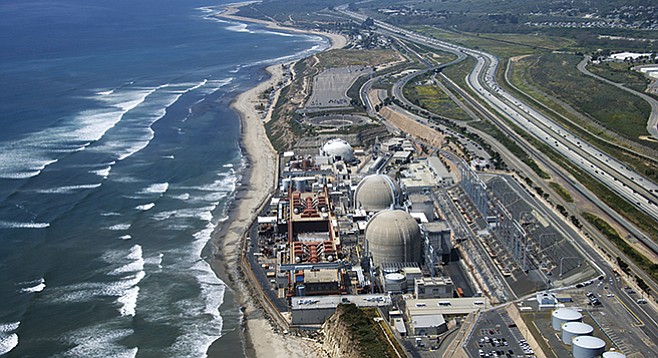 Facebook
Facebook
 X
X
 Instagram
Instagram
 TikTok
TikTok
 Youtube
Youtube

At a press conference this afternoon (November 3), the firm of Aguirre & Severson will reveal its lawsuit against the California Coastal Commission.
The suit, to be filed in superior court, seeks to compel the commission to jettison its October 6 decision permitting Southern California Edison to store 3.6 million pounds of high level nuclear waste on a North County beach within 100 feet of the shoreline.
The plaintiff is Patricia Borchmann of the San Diego activist organization Citizens Oversight.
After steam generators failed only 11 months after their installation, Southern California Edison, majority owner, closed down the San Onofre nuclear plant in January of 2012. Then the utility and brass of the California Public Utilities Commission secretly and illegally plotted how to shift most of the decommissioning costs to ratepayers, instead of shareholders.
Then Edison applied to the Coastal Commission for a permit to store the nuclear waste — which will be highly radioactive for thousands of years — on the beach.
While in operation, San Onofre was the only North American nuclear plant to be located near a major freeway, Interstate 5. The area is subject to both earthquakes and tsunamis, according to the suit. A report by the Coastal Commission staff indicated that within 35 years, the coast near the storage installation will erode by one-third.
In connection with the issuance of the permit, Edison agreed to pay more than $5 million to the commission, according to the suit.


At a press conference this afternoon (November 3), the firm of Aguirre & Severson will reveal its lawsuit against the California Coastal Commission.
The suit, to be filed in superior court, seeks to compel the commission to jettison its October 6 decision permitting Southern California Edison to store 3.6 million pounds of high level nuclear waste on a North County beach within 100 feet of the shoreline.
The plaintiff is Patricia Borchmann of the San Diego activist organization Citizens Oversight.
After steam generators failed only 11 months after their installation, Southern California Edison, majority owner, closed down the San Onofre nuclear plant in January of 2012. Then the utility and brass of the California Public Utilities Commission secretly and illegally plotted how to shift most of the decommissioning costs to ratepayers, instead of shareholders.
Then Edison applied to the Coastal Commission for a permit to store the nuclear waste — which will be highly radioactive for thousands of years — on the beach.
While in operation, San Onofre was the only North American nuclear plant to be located near a major freeway, Interstate 5. The area is subject to both earthquakes and tsunamis, according to the suit. A report by the Coastal Commission staff indicated that within 35 years, the coast near the storage installation will erode by one-third.
In connection with the issuance of the permit, Edison agreed to pay more than $5 million to the commission, according to the suit.
Comments